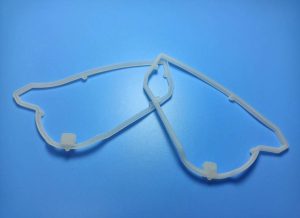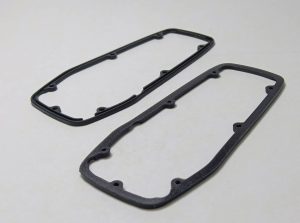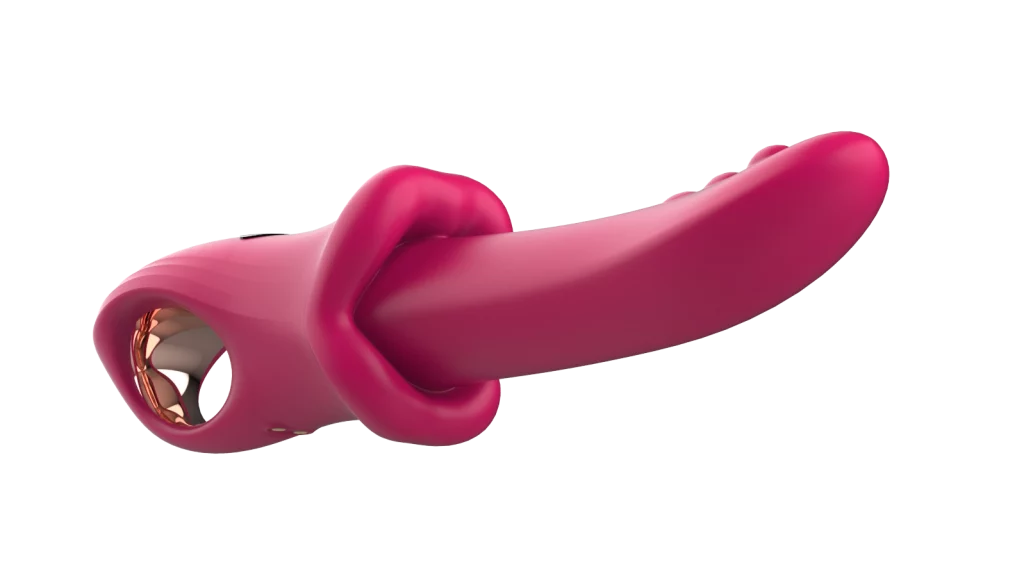
Silicone accessories have gained significant popularity due to their versatility and durability across various applications. Understanding the processing of silicone accessories is crucial for improving product durability, which is a primary concern in manufacturing industries. This article delves into the different aspects of silicone accessory processing, highlighting the types of materials, techniques, and benefits involved in creating long-lasting products.
Understanding Silicone Accessories Processing
Overview of Silicone Materials
Silicone materials are synthetic polymers composed of silicon, oxygen, carbon, and hydrogen. They exhibit remarkable flexibility, high-temperature resistance, and a unique water-repelling quality. These properties make silicone ideal for numerous applications, ranging from household items to industrial components. Silicone’s biocompatibility further enhances its appeal for medical devices and food-grade products, ensuring safety for everyday use. The diverse range of silicone types enables manufacturers to select the appropriate formulation based on specific product requirements, ultimately enhancing durability.
Common Types of Silicone Products
Silicone accessories are found in various forms, including seals, gaskets, kitchenware, and electronic device casings. These products are designed to withstand harsh environments, making them suitable for automotive, aerospace, and consumer electronics industries. For example, Silicone spatulas are vital in preventing moisture ingress in electronic devices, while silicone baking mats provide a non-stick surface for culinary applications. Recognizing the broad scope of silicone products is essential for appreciating their role in enhancing product performance and longevity.
Importance in Various Industries
The versatility of silicone accessories makes them indispensable in numerous industries. In the automotive sector, silicone components are crucial for engine performance and reliability due to their heat and oil resistance. Additionally, the healthcare industry utilizes silicone in medical devices such as catheters and prosthetics, where durability and biocompatibility are paramount. Meanwhile, the consumer goods sector benefits from c, which is favored for its easy maintenance and long lifespan. Overall, the importance of silicone accessory processing is evident across multiple domains, contributing to safety, function, and efficiency.
Techniques in Silicone Accessories Processing
Molding Methods
The manufacturing of silicone accessories relies heavily on molding techniques to shape the material effectively. Manufacturers often employ various molding methods, each with distinctive advantages tailored to specific product needs.
Compression Molding
Compression molding is a widely used technique in silicone processing that involves placing a pre-measured amount of silicone material into a heated mold cavity. The application of heat and pressure allows the material to flow and fill the cavity, resulting in a shaped product upon cooling. This method is particularly effective for large parts and is known for its efficiency and cost-effectiveness. It is an excellent choice for creating thick-walled silicone items, enhancing the product’s overall durability.
Injection Molding
Injection molding has become increasingly popular in silicone accessory processing due to its precision and scalability. During this process, liquid silicone rubber (LSR) is injected into a mold using a high-pressure system, allowing for complex geometries and intricate designs. This technique ensures consistent results and high-quality finishes, making it ideal for producing small yet intricate components. The ability to create complex shapes contributes to the overall performance and longevity of the final product.
Transfer Molding
Transfer molding is another technique utilized in silicone accessory processing, especially for high-viscosity materials. In this method, the silicone is preheated and transferred into a mold via a runner system. As it cures within the mold, it maintains tight tolerances and smooth finishes. Transfer molding is particularly favorable for encapsulating electronic components, ensuring protection against environmental factors that could compromise durability.
Finishing Processes
Finishing processes are vital for enhancing the aesthetics and performance of silicone products. After the primary molding processes, several finishing techniques can be employed to ensure the highest quality.
Trimming and Deflashing
Trimming and deflashing involve the removal of excess material from the molded product. This step is crucial for achieving the desired appearance and functionality, removing flash, and ensuring that parts fit together as intended. Effective trimming improves the usability of silicone accessories, preventing potential performance issues linked to excess material.
Surface Treatments
Surface treatments can significantly enhance the durability of silicone products. Techniques such as plasma treatment or coating application can improve adhesion for subsequent processing steps, such as painting or bonding. Surface treatments also enhance resistance to UV exposure and chemical degradation, ultimately extending the lifespan of silicone accessories.
Benefits of Advanced Silicon Processing Techniques
Improved Strength and Flexibility
Advanced silicone processing techniques contribute to enhanced strength and flexibility of the final products. These attributes ensure that silicone accessories can withstand significant stress without breaking or degrading. Improved strength translates into longer-lasting products capable of enduring the rigors of daily use, whether in industrial, consumer, or medical applications.
Enhanced Resistance to Extreme Conditions
One of the critical benefits of using well-processed silicone accessories is their ability to resist extreme environmental conditions. Silicone materials boast excellent thermal stability, allowing them to perform in high-temperature environments without losing structural integrity. Additionally, their resistance to chemicals and moisture makes them suitable for applications where exposure to harsh substances is common.
Longevity and Wear Resistance
Silicone accessories processed with advanced techniques exhibit outstanding longevity and wear resistance. The durability of silicone ensures that products maintain their functionality over extended periods, reducing the need for frequent replacements. This not only results in cost savings for manufacturers but also aligns with sustainability goals by minimizing waste.
CASINDA’s Innovative Solutions in Silicone Accessories

Customization Capabilities
CASINDA stands out in the realm of silicone accessory processing by offering extensive customization options to meet diverse customer needs.
Tailored Designs
The company specializes in creating tailored designs that cater to individual client requirements. This includes producing custom silicone accessories with specific dimensions, shapes, and functional features that enhance usability. By leveraging advanced processing techniques, CASINDA ensures that each product meets the highest standards of performance and durability.
Versatile Color Options
Furthermore, CASINDA provides versatile color options for silicone accessories, allowing customers to choose aesthetics that resonate with their brand image. Customization in color not only enhances the visual appeal of products but also contributes to brand recognition in competitive markets.
Quality Control Measures
To maintain its reputation for high-quality products, CASINDA implements rigorous quality control measures within its silicone accessory processing.
Rigorous Testing Standards
Each product undergoes extensive testing to verify that it meets specified durability and safety standards. This thorough approach ensures that customers receive reliable accessories that perform optimally in their intended applications. By upholding these rigorous testing procedures, CASINDA reinforces its commitment to quality.
Certification and Compliance
Additionally, CASINDA adheres to industry regulations and certifications, ensuring that its products comply with international safety and performance standards. Compliance not only assures customers of the quality of silicone accessories but also fosters trust and credibility in the marketplace.
Real-World Applications of Durable Silicone Accessories
Automotive Industry
Silicone accessories play a pivotal role in the automotive sector, where durability and reliability are of paramount importance. Components such as silicone gaskets and seals are designed to withstand extreme temperatures and harsh chemicals, including oil and antifreeze. The high thermal stability of silicone allows for sustained performance even in demanding conditions, which enhances engine longevity and reduces wear on critical parts. Additionally, silicone accessories contribute to noise and vibration damping, providing a more comfortable ride and improved overall vehicle performance.
These attributes not only lead to an increase in vehicle safety but also significantly extend the lifespan of automotive systems. Manufacturers prefer silicone accessory processing because they yield components that are less prone to cracking or failure over time, which can reduce maintenance costs and enhance customer satisfaction. With a rising focus on vehicle longevity and reliability, the integration of silicone accessories is becoming increasingly common in modern vehicle designs.
Consumer Electronics
The consumer electronics market has seen a notable surge in the adoption of silicone accessories, primarily due to their unmatched durability and protective capabilities. Silicone cases for smartphones and tablets are designed to absorb shocks and protect devices from drops, while also enhancing grip and user convenience. The water-resistant properties of silicone ensure that electronic components remain protected from moisture intrusion, offering manufacturers and consumers peace of mind regarding product reliability.
Moreover, silicone gaskets are essential for sealing electronic devices, preventing dust and dirt from accumulating within vulnerable areas. These accessories processed with attention to detail exhibit superior heat resistance, which is critical for electronic devices that generate heat during operation. As technology evolves and consumer expectations rise, the demand for durable silicone accessories in electronics will continue to expand, making them an integral part of product design.
Medical Devices
In the medical field, silicone accessories have become indispensable due to their biocompatibility and durability. Medical devices such as catheters and seals must not only be safe for human contact but also possess the ability to endure sterilization processes without degradation. Silicone is recognized for maintaining its integrity under high-temperature autoclaving, which is a standard sterilization method in healthcare settings.
Processing silicone accessories in a quality-controlled environment ensures that these products meet the necessary regulatory standards for medical use. The longevity of silicone products is crucial for reducing the frequency of replacements, which can be costly and inconvenient for healthcare providers. As innovations continue to arise in medical technology and silicone mold processing, the role of silicone accessories will expand, providing safe and durable solutions across various applications.
Why Choose Quality Processing for Silicone Accessories?
Cost Efficiency Over Time
Investing in quality silicone accessory processing can lead to significant cost efficiencies in the long run. Although the initial investment in high-quality materials and processing techniques may be higher, the resulting products often exhibit extended durability. This longevity translates into reduced replacement costs, minimizing the financial burden on manufacturers and end-users alike.
Additionally, durable silicone accessories often require less frequent maintenance or repair services. By choosing well-processed silicone products that withstand wear and environmental factors, companies can save on operational costs associated with downtime and product failures. These cost savings highlight the importance of prioritizing quality processing in silicone accessory production, particularly for businesses committed to long-term sustainability.
Reducing Maintenance Needs
One of the standout benefits of quality silicone processing is the reduction in maintenance needs for products across various industries. Silicone accessories, when processed correctly, are designed to endure dynamic stresses and adverse conditions, allowing them to perform without requiring frequent checks or interventions. This reliability not only enhances operational efficiency but also frees up resources that might otherwise be spent on constant repairs or replacements.
Furthermore, reduced maintenance requirements are particularly valuable in demanding environments such as automotive and medical applications, where performance is critical. Manufacturers can improve their product reliability and customer satisfaction by integrating high-quality silicone accessories into their designs, further establishing their reputation in the competitive market.
Future Trends in Silicone Accessories Processing
Technological Innovations
The future of silicone accessory processing is poised for considerable innovation, driven by advancements in manufacturing technologies. As 3D printing technology continues to evolve, the potential for producing customized silicone accessories on demand will become increasingly viable. This approach will streamline production times and allow for the creation of unique designs that cater to specific customer needs and applications.
In conclusion, the processing of silicone accessories plays a critical role in enhancing product durability across a multitude of industries. By focusing on quality and innovation, manufacturers can develop products that not only comply with regulatory standards but also exceed performance expectations, leading to greater customer satisfaction and long-term operational benefits.







